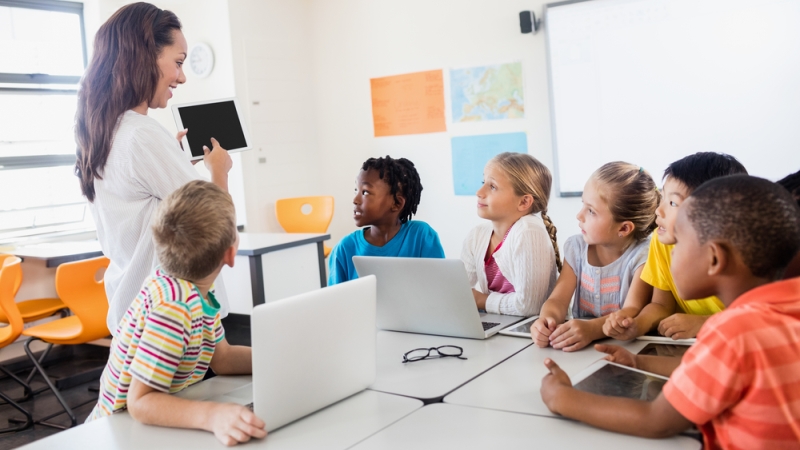
From wearables to smartphones, technology is becoming increasingly integrated into our lives–and the classroom is no exception. Schools are bringing technology into the classroom to improve learning outcomes and personalize education. Students are using laptops for research, developing book reports in PowerPoint and exploring faraway lands with virtual reality technology.
Nuiteq, a maker of collaborative touch screen technology, recently released a new infographic examining the benefits of integrated technology in the classroom.
While classroom technology is growing in popularity, the infrastructure needed to support the technology isn’t always present. According to the infographic, 80 percent of K-12 schools have insufficient Internet for their current needs. That means schools need to not only invest in smart boards, laptops, and tablets, but also in Wi-Fi, cloud capabilities, and security programs. Technology is beneficial only if students can actually use it. Without the necessary infrastructure, investment in hardware is a waste of money.
Frequently, students that are disengaged from the classroom can be reengaged with technology and learning games, but there are more reasons to integrate technology into the classroom. Technology can help boost information retention. According to the infographic, the majority of second grade students retained more information about a research topic when they used PowerPoint to present their findings. Technology also allowed students to share information and collaborate more easily. Research shows that 39 percent of students who have access to the Internet in class use it to participate in online discussions with their class. Forty percent of students develop, share, or post their work on a website, wiki, or blog via the Internet.
Technology is also beneficial to schools as it allows for greater flexibility and personalization. Teachers can use technology to personalize a lesson to best meet a student’s needs or learning style. In the past, a teacher was either stuck teaching every student the same way, or would need to develop individual lessons for all students–which is time consuming and difficult. With the rise of laptops, tablets, and mobile devices, teachers can take advantage of the plethora of apps on the market to individualize lesson plans. If a teacher notices a student is struggling, the teacher can find an app to help reinforce a lesson, or perhaps teach the same lesson in a new way, and the student can work on the lesson during class time or even at home.
